|
|
Eseries – Nokia conquers enterprise market
The company of Nokia gathered a small group of journalists on the
12 of October in London. The goal was to demonstrate its new enterprise
products of the Eseries. This
day can surely go down in history since three leading companies
on various markets (mobile terminal market, PDA market and the market
of MP3 players) represented their new products. And all this on
the same day. Besides Nokia, the company of Apple demonstrated its
iPod video, and the company of Palm officially announced its Palm
TX and Palm Z22. I do not remember such precedents before. Also
I’d like to remind that just a day before the company of Sony Ericsson
had officially introduced its new communicator and the company of
Palm had demonstrated its Windows Mobile communicator.
The Nokia’s press-conference was relatively modest; it gathered
several journalists and carried out a business presentation without
a pomp and agiotage, just a short briefing. And considering the
hysteria about newly announced iPod models and the scale of the
Apple’s enterprise, this event was just a drop in the ocean. The
reason is plain – that is a target group. Gradually the company
of Nokia changes numbers within the limits of its model line. And
after a multimedia Nseries (the emphasis put on the camera quality,
music playback) Nokia launches its Eseries. These models are targeted
at enterprise market where a decision about the purchase is made
not by an end-user, but by an IT department of the company. And
essentially, the determining factors are total cost of ownership
(TCO) and security level, but not design or a qualitative display.
Undoubtedly, these models will be available on retail market as
well.

The newly represented three Eseries phones completed forming the
strategy of the Finnish company on the corporate market, now it is
clear. And this step is a logical addition to the September Nokia
Business Center announcement.
Having watched a rapid growth of a rival company of Research In
Motion (e-mail BlackBerry devices) on the corporate market, the
competitors are preparing their measures in answer only now. In
a short period BlackBerry’s communicators actually managed to become
a corporate standard. Certainly, some countries remained uncovered,
but still the market has been developing. E-mail is a standard function
for mobile devices, and then what is the secret of the success?
The answer is push-mail technology, comfortable keyboard input,
and a capability to answer on an e-mail quickly. As soon as a message
comes to the main server it is instantly delivered to the mobile
device. Thus you do not have to check the server manually or on
the schedule. A QWERTY-keypad (or its local versions) provides comparatively
comfortable input. Plain and obvious for first sight solutions provided
rapid ascent of Research In Motion, and now the company is a leader
of the corporate sector (enterprise mobile e-mail), while Nokia
holds 25% (according to the company representatives).
Not only Nokia, but Motorola with its Motorola Q encroaches on
the RIM’s popularity. The rivals’ actions significantly influence
the RIM’s stock price, which falls before the official announcement
of the rival models (drains, insider information available to the
players even before the official announcement). Moto Q was announced
on the 25 of July, and gradually the market digested this information
reducing the RIM’s stock price since the end of June. It fell to
the minimal value in 9 weeks, which was exactly on the 25 of July.
And the same concerns the presentation of the Eseries by Nokia.
A regular sharp turn of the price fall was observed from the middle
of September till the Nseries presentation (and now the minimal
value was achieved in 7 months). However, in this case a patent lawsuit
with NTP influenced much.
This tells in favour of Nokia’s high chances for success. The company
expects to have taken the leading position by year 2008, and truly
it has the necessary potential. Now let’s try to analyze the facts
present. The launch of the models was anticipated by the market
research by Simpson Carpenter by request of Nokia, and you can acquaint
with the main
results.
BlackBerry Connect or MS Exchange?
The company of RIM not only releases devices, but also licenses
software. For now Nokia supports all the significant solutions in
enterprise e-mail including BlackBerry Connect, GoodLink from Good
Technology, Inc., Nokia Business Center, Seven Mobile Mail, Seven
Always-On Mail and Visto Mobile. Also support for push-mail is expected
in MS Exchange 2003 SP2 (if you remember in the beginning of the
year Nokia announced licensing Microsoft ActiveSync). Thus Nokia’s
smartphones are not strictly bound to any certain solution for the
enterprise mobile mail. For the sake of justice, I’d like to note
that there is no strict binding in MS Exchange in Windows Mobile
smartphones, thus you can use BlackBerry Connect and other solutions.
Moreover, own solution Nokia Business Center is not strictly bound
to Nokia’s terminals; you need only certify a phone supporting Java
MIDPI 2.0 in Nokia and then use it.
We think this support for the main mobile enterprise e-mail solutions
is a right step for Nokia. Thus companies using BlackBerry Connect
will be able to change BlackBerry terminals for Nokia’s communicators
with no great expenditures. And companies planning to integrate
mobile mail can now select of a wide range.

Security, camera
High security level became almost the most important parameter
influencing the decision. And here everything seems done surprisingly
right – starting with remote control of access rights, engaging
companies working in a sphere of informational security, DRM, and finishing
with the absence of integrated camera.
Now Nokia finally understood that a good phone for business has
to be at least issued specially without a camera. More and more
companies in the world forbid carrying in devices with integrated
cameras. And really, why to forbid USB drives, diskettes and writable
CDs, restricting access rights to follow security measures, if you
can take a photo of all necessary information from, for instance,
internal ERP system (balance, top mangers’ pay, contractors’ list,
turnover data, payments and details on other transactions). During
negotiations with a rival you can accidentally take a photo of a
document you noticed, and only then consider if you can benefit
by it. Even a photo of a monitor hang with stickers can give a lot
of information. With the growth of camera capabilities, its owners
will have more and more troubles, various restrictions will appear
avalanchely. And that is why only one of the three introduced models
is equipped with a camera. This is Nokia E70. So, not always the
interest of IT department coincides with the one of end-users. Many
of them have taken in Nokia E60 and E61 coolly due to this very
fact. It seems more logical for the company to produce two variants
of each model - with a camera and without it, for instance, the
Taiwanese company of HTC (the main maker of Windows Mobile devices)
has been practicing this for long.
Interfaces
For today the models are equipped with all possible interfaces.
Starting with these phones Wi-Fi (802.11g, and security standard
is supported 802.11i) becomes a general standard. And by the way,
communicators do have a client for corporate IP telephony installed
(calls inside a corporate network, using a 4-digit number, call
transfer to another number). Now VoIP support from Cisco and Avaya
is claimed.
IrDA had been gradually vanishing from Nokia’s smartphones, and
it seemed we would never meet it in new models. However, the Eseries
has it back. Many business users posses phones without Bluetooth,
but equipped with IrDA. The company carried out a research, which
revealed that IrDA was still used; Bluetooth did not force it out
completely. Naturally, Bluetooth, WCDMA 2100 and EDGE are present;
USB devices connected to the phone can work as mass storage device without
any drivers. It is curious a program for GPS navigation is preinstalled;
however, GPS adapter should be connected via Bluetooth. All interfaces
can work simultaneously, and Bluetooth provides about 6 connections
at once. Thus you get the maximum equipment with interfaces, and
an integrated GPS is a question of time, such devices will be available
later.
All the models are based on Nokia Series 60 v3 (Symbian OS 9.1
kernel).
The models are designed as strictly as possible, not a hint at
excess. The three models represent three various form-factors, and
now let us consider each in details.
Nokia E60
The model is a classical candybar with dominating straight lines
and almost absent roundings in design. At first sight, it raises
strong associations with a white Sony Ericsson T630 even being larger.
The device was represented only in one colour solution and it is
silvery. And it’s not hard to guess that some time after the launch
a black version will appear to spur on the interest to the model
(like it was with Sony Ericsson T630 and Motorola V3).
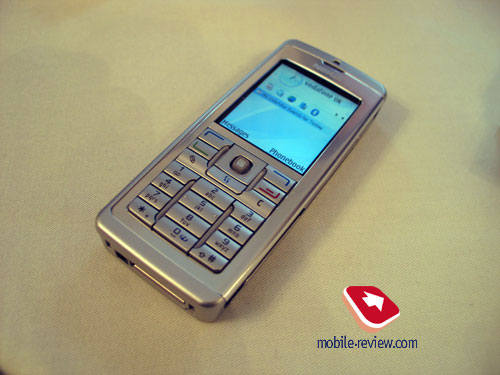
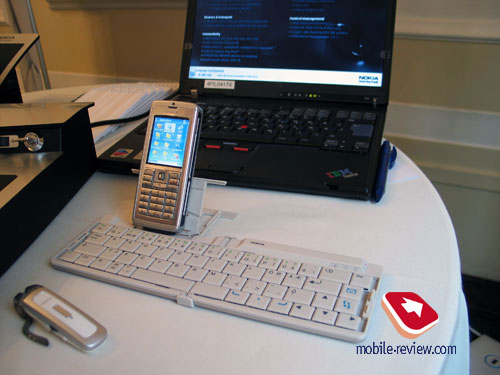
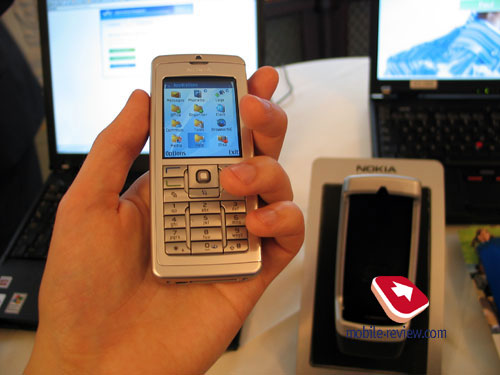
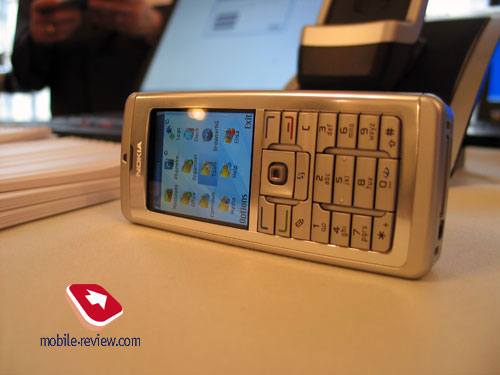
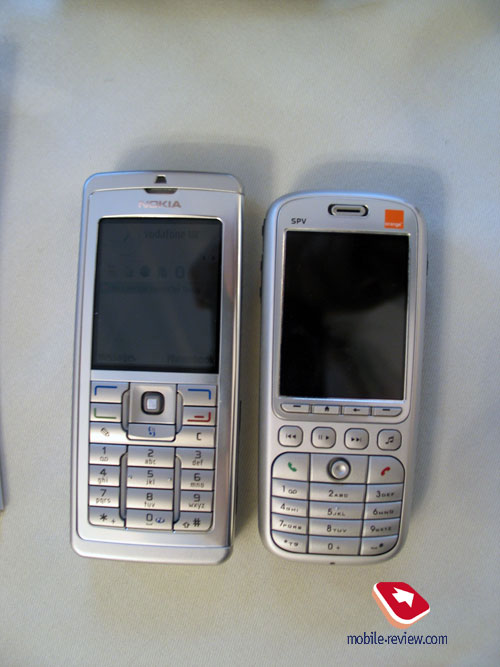
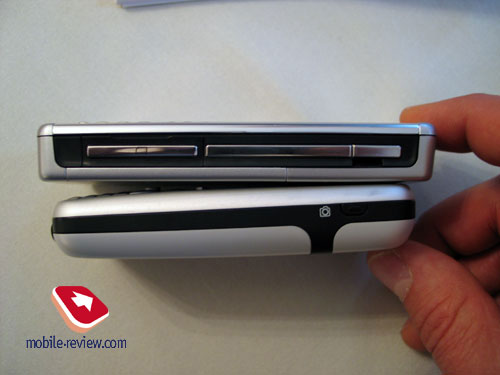
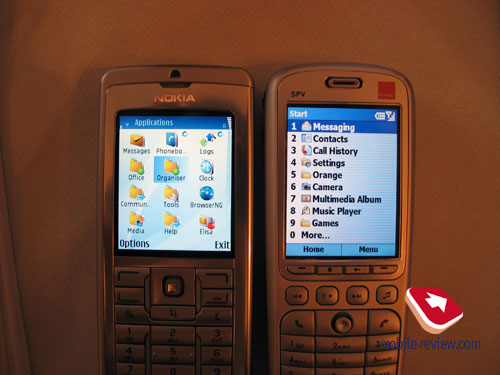
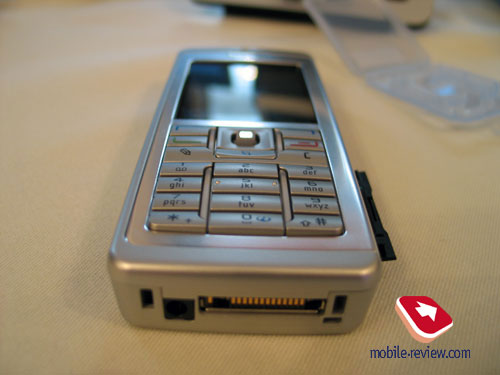
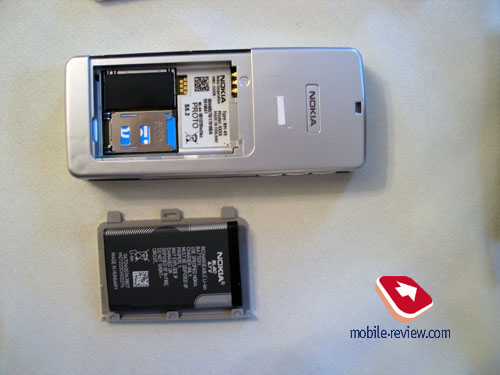
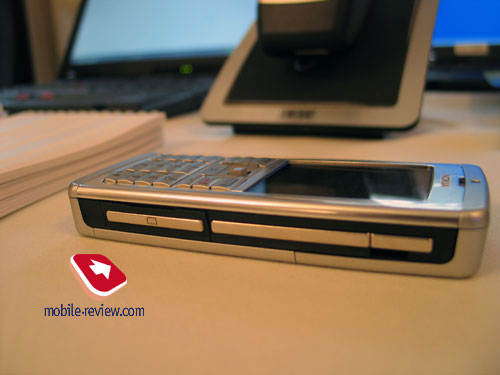
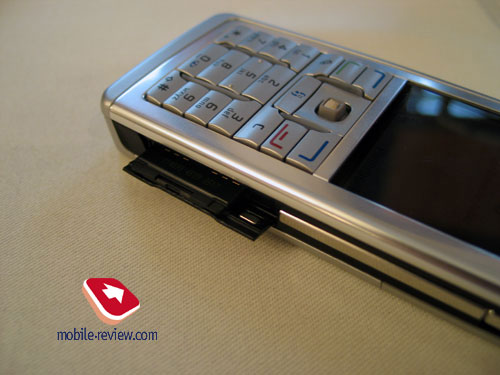
The body size reduced coming closer to HTC’s smartphones (the smallest
smartphones in a classical form-factor), you can see it on comparative
photos – the device is longer but thinner, the weight is slightly
more.
- HTC Tornado (Business edition): 109x47x19 mm, weight – 109
g
- Nokia N70: 108.8x53x17.5 mm, weight – 126 g
- Nokia E60: 115x49x16.9 mm, weight – 117 g
The screen is the best on the market considering the quality of
the image (16 million colours, 352x416 pixels). However, do not
give in to euphoria, the diagonal forms only 2”, you can see the
screen is much smaller than in HTC Hurricane. Even more, you will
not see real difference between 256K colours and 16 million (the
difference is felt like between 64K and 262K, but it is almost unnoticeable).
Hot change for MMCmobile (DV RS-MMC) is provided, and internal memory
forms 30MB. The company announced battery life from a 970 mAh (BL5C)
battery equal to 6 hours of talks and up to 8 days of standby time.
That is a good value, we only should test it. Interface capabilities
described above are common for all the models.
Nokia E61
That is a new form-factor for Nokia. After the press-conference
the Nokia representatives were asked why the E61 looked like BlackBerry
so much. And the answer was that this form-factor was then demanded
on the market, potential customers wanted exactly such a device.
Truly, the design is much close to both BlackBerry and Motorola
Q (a candybar with horizontally oriented screen, a keypad under
the screen). The model is thin with the dimensions of 117x69.7x14
m, and weighs 144g. It is not as thin and light as Motorola Q, but
the screen is much larger at that.
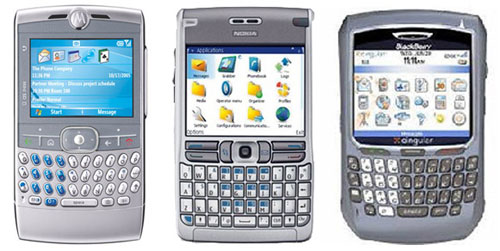
And about the screen, also it shows 16 million colours, the announced
resolution forms 320x240 pixels (this way problems with compatibility
with old software are practically granted). About 75 MB of memory
are available to a user, and a connector for miniSD is integrated
(which is also one more innovation, since before it Nokia preferred
RS-MMC). Hot change is supported; however, you will have to remove
the battery cover.
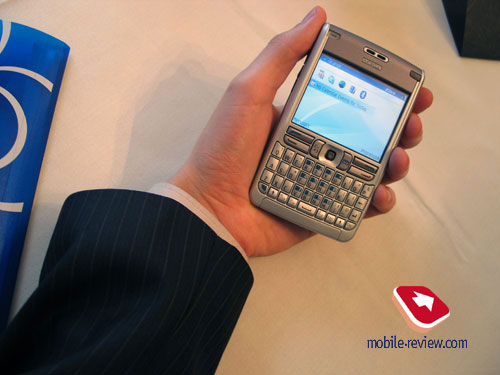
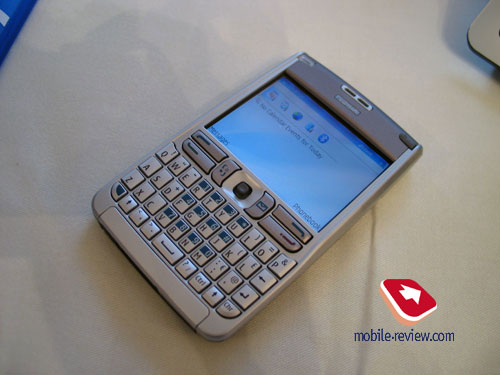
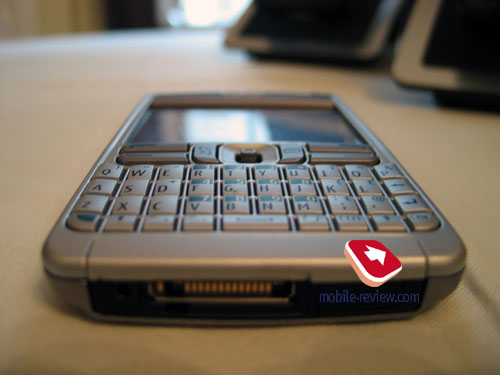
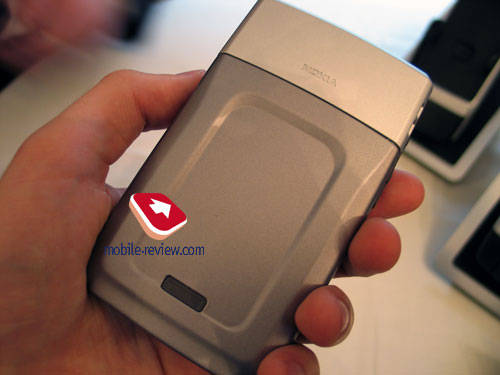
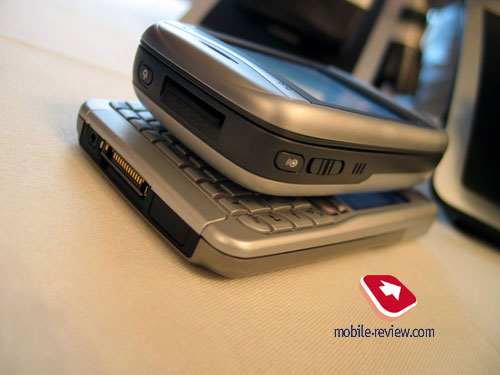
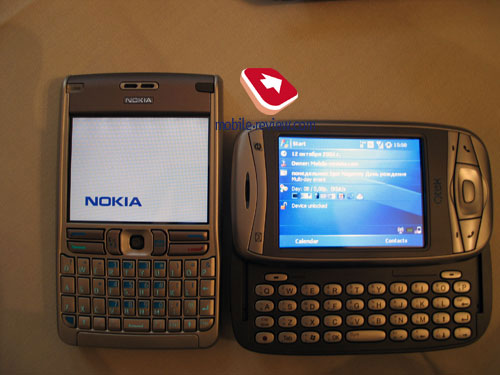
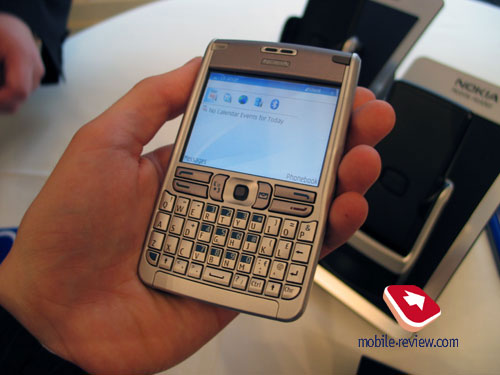
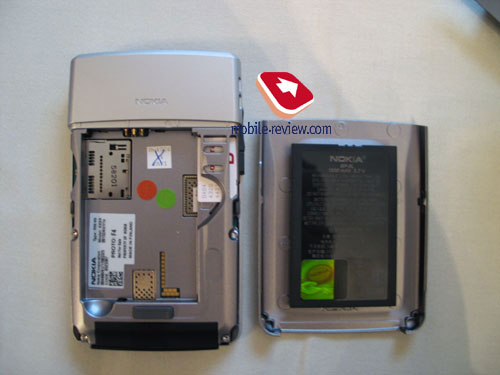
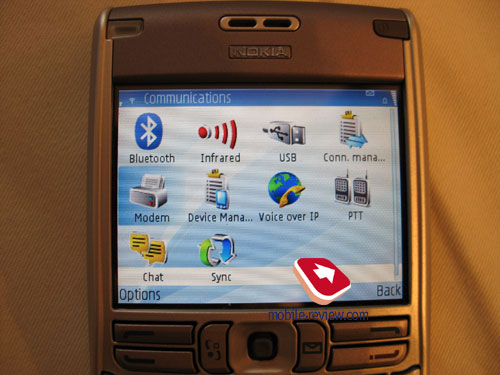
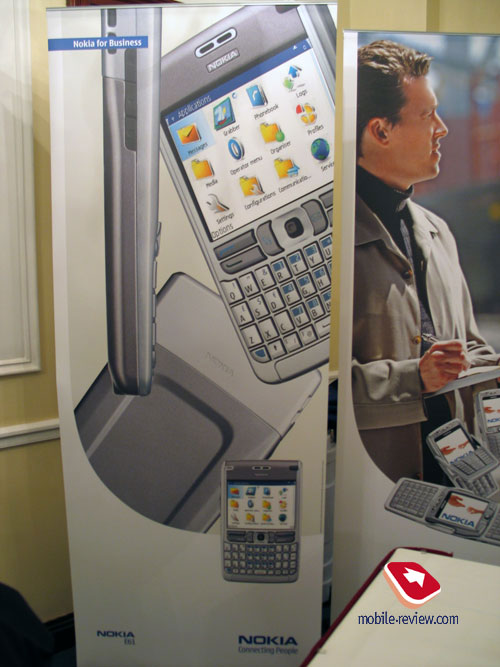
The keypad turned out rather comfortable, and when typing, mistakes
are almost impossible. Its well-distanced keys are pressed neatly.
The weight of the device is well-distributed, and so it rouses no
discomfort when entering data. In comfort the keypad is comparable
to Palm Treo 650, however, gives way to Nokia 9300/ Nokia 9500/
HTC Wizard (you can compare with the latter one on the photo). Light
sensor automatically controls the keypad backlighting. The only
serious minus is the number of keys is not enough for placing Russian
layout.
The battery capacious of 1500 mAh is claimed to provide up to 7
hours of talks and up to 1 days of standby time. That is impressing,
but we should only check it.
Nokia E70
Judging by the number, we are now considering the top model of
the line. Nominally, that is right. Here is a camera, which is absent
in other models, a combination of two form-factors, a larger keypad
than it is integrated into the E61 (despite this fact, it is less
comfortable than in the E61).
The design is based on the Nokia 6822, and the model has a folding
body. Some time ago the market turned out very cool to Nokia 6800,
then 6810, 6820 and 6822. And the E70 has the same fate. It will
be least popular of the three models.
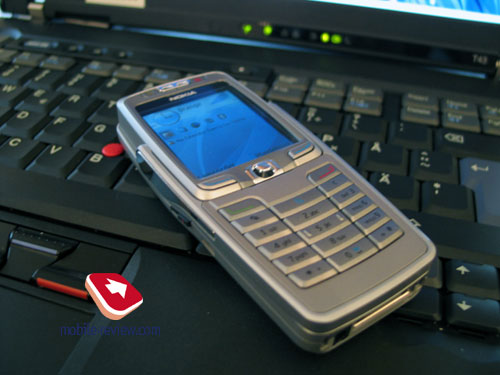
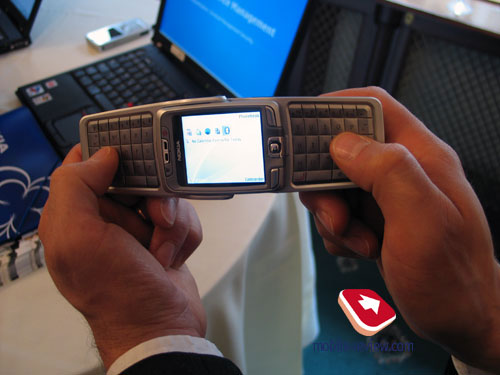
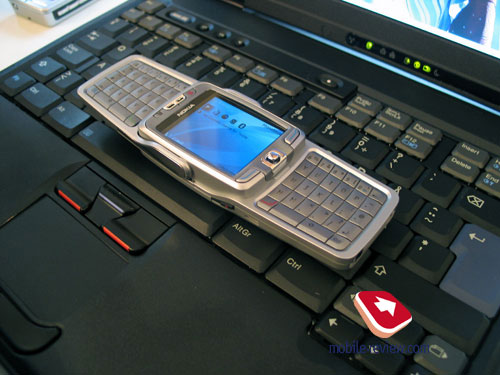
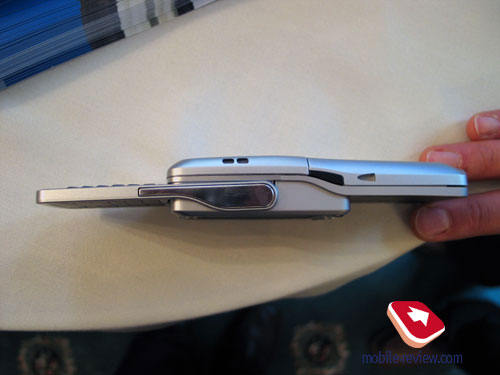
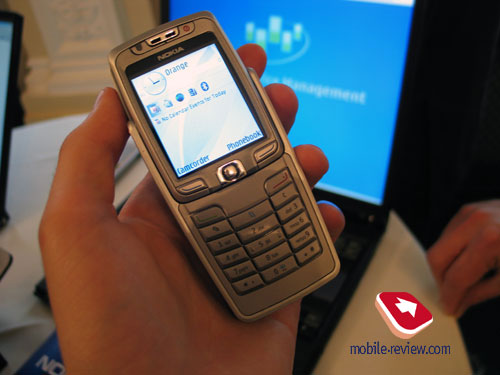
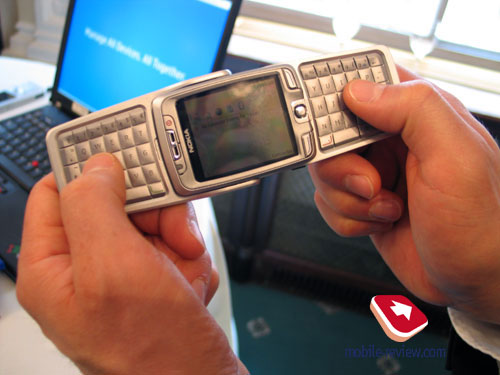
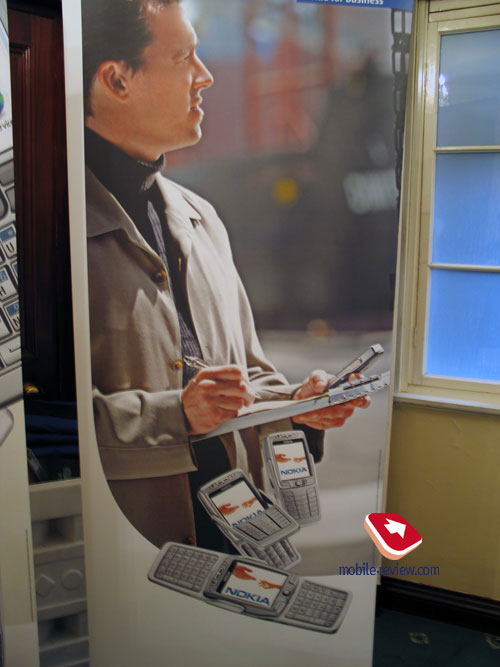
The dimensions of 117x53x22 mm, and the weight is 127 g. This
smartphone features the same 75MB of internal memory and miniSD
card as the E61, and the screen is of the same resolution as Nokia
E60, however shows 262K colours. The camera is equal to Nokia N70.
The company announced battery life (1150 mAh battery) equal to 7
hours of talks and up to 9 days of standby time.
Conclusions and impressions
The models will be available in the 1Q 2006, and the prices will
vary from 350 to 450 Euros. End-users treated new Nokia’s phones
coolly; some told about an absent camera, others pointed the copied
design. However, these models are targeted at enterprise market,
which demands sometimes do not repeat the ones of end-users. And
Nokia really can take the leading position in this segment. Then
RIM will lose terminals supplier’s positions inevitably, but as
a supplier for software it will be afloat (even here the RIM’s role
will reduce, however, less intensively, since changing a terminal
is much easier and cheaper than integrating an e-mail solution in
a corporation). Here are the factors we are based on when telling
that Nokia has high chances on the market of enterprise e-mail solutions:
- Great attention is paid to security, remote control of access
rights. I’d also like to mention these are the first products
to support wireless security standard IEEE 802.11i.
- The two models have no camera, which makes them more attractive
in the eyes of IT department
- The maximum functionality for today (only a touchscreen is
absent). In specification they are close to HTC Tornado only.
- High compatibility with various e-mail solutions, which widens
the range of potential customers, including those who have already
integrated mobile e-mail.
- Enterprise VoIP telephony is supported.
- Attractive design and various form-factors for various demands.
- An executive who worked for HP-Compaq for 17 years, and the most
of this time as a General Manager of Industry-Standard Servers,
used to working with corporations and understanding their needs.
We speak about Merry McDowell.
Anton Kotov
(anton.kotov@mobile-review.com)
Translated by Maria Mitina (maria.mitina@mobile-review.com)
Published - 17 October 2005
Have something to add?! Write us... eldar@mobile-review.com
|
News:
[ 31-07 16:21 ]Sir Jony Ive: Apple Isn't In It For The Money
[ 31-07 13:34 ]Video: Nokia Designer Interviews
[ 31-07 13:10 ]RIM To Layoff 3,000 More Employees
[ 30-07 20:59 ]Video: iPhone 5 Housing Shown Off
[ 30-07 19:12 ]Android Fortunes Decline In U.S.
[ 25-07 16:18 ]Why Apple Is Suing Samsung?
[ 25-07 15:53 ]A Few Choice Quotes About Apple ... By Samsung
[ 23-07 20:25 ]Russian iOS Hacker Calls It A Day
[ 23-07 17:40 ]Video: It's Still Not Out, But Galaxy Note 10.1 Gets An Ad
[ 19-07 19:10 ]Another Loss For Nokia: $1 Billion Down In Q2
[ 19-07 17:22 ]British Judge Orders Apple To Run Ads Saying Samsung Did Not Copy Them
[ 19-07 16:57 ]iPhone 5 To Feature Nano-SIM Cards
[ 18-07 14:20 ]What The iPad Could Have Looked Like ...
[ 18-07 13:25 ]App Store Hack Is Still Going Strong Despite Apple's Best Efforts
[ 13-07 12:34 ]Infographic: The (Hypothetical) Sale Of RIM
[ 13-07 11:10 ]Video: iPhone Hacker Makes In-App Purchases Free
[ 12-07 19:50 ]iPhone 5 Images Leak Again
[ 12-07 17:51 ]Android Takes 50%+ Of U.S. And Europe
[ 11-07 16:02 ]Apple Involved In 60% Of Patent Suits
[ 11-07 13:14 ]Video: Kindle Fire Gets A Jelly Bean
Subscribe
|






























